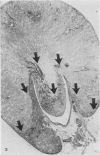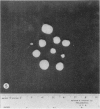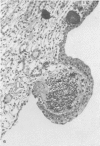Abstract
Naturally occurring kidney stones are rare in animals. The Japanese strains of spontaneously hypertensive rats (SHR) are normotensive at birth but develop high blood pressure, hyperglycaemia and hyperlipidaemia as they mature. The SHR strain is prone to develop kidney stones. A unique sub-strain of SHR has been developed in which some animals develop hypothalamic obesity concomitantly with their rising blood pressure, i.e. Obese/SHR. The Obese/SHR characteristically develop microscopic kidney stones which become detached at an early stage of formation, migrate to the bladder, and grow by concretion into huge, rounded calculi. The stone nidus starts as a subepithelial cyst-like focus containing oedema, colloidal acidic mucoprotein, and red and white blood cells suspended on a delicate network of fibrils. THe nidi grow by concretion of an admixture of calcium and acidic protein in a lamellar arrangement. The disparate morphogenesis and anatomic location of kidney stones in Obese is opposed to non-obese/SHR suggest that calculus formation may be governed by specific differences in genetic programming. The incidence of kidney stones parallels the severity and chronicity of the hypertension in SHR, non-obese and Obese/SHR, and the Cushingoid habitus in the Obese/SHR.
Full text
PDF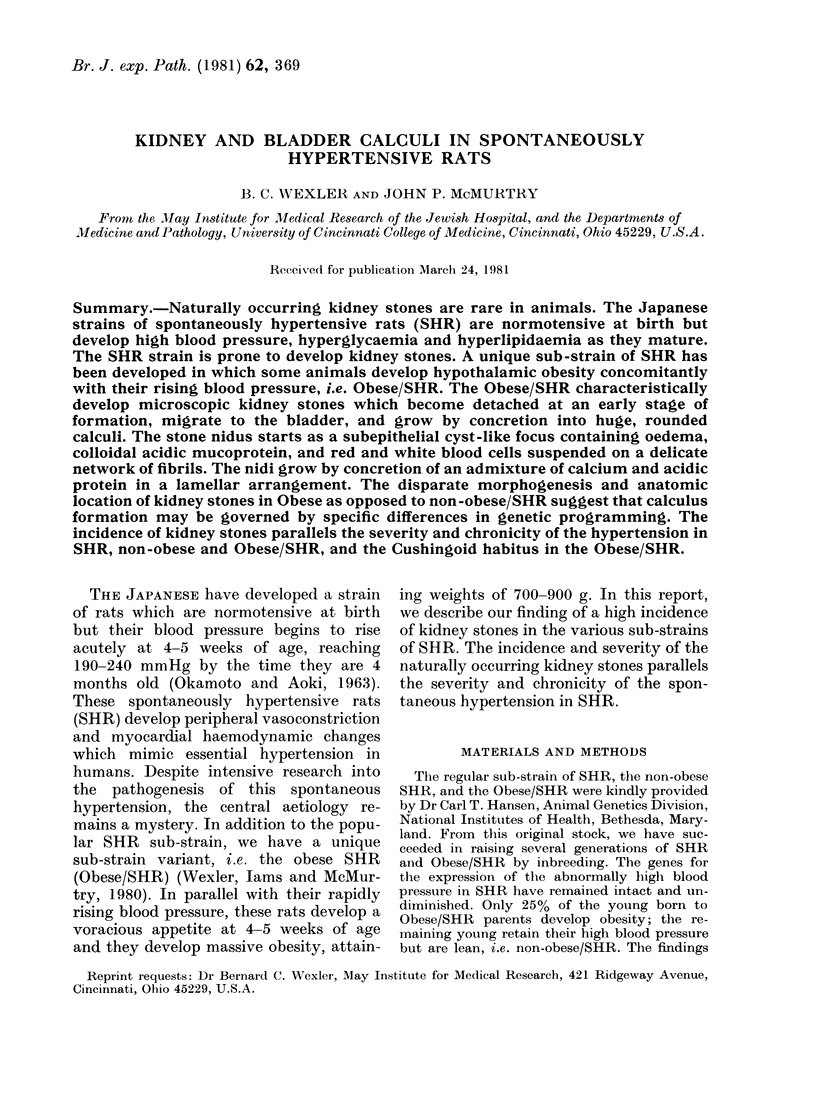
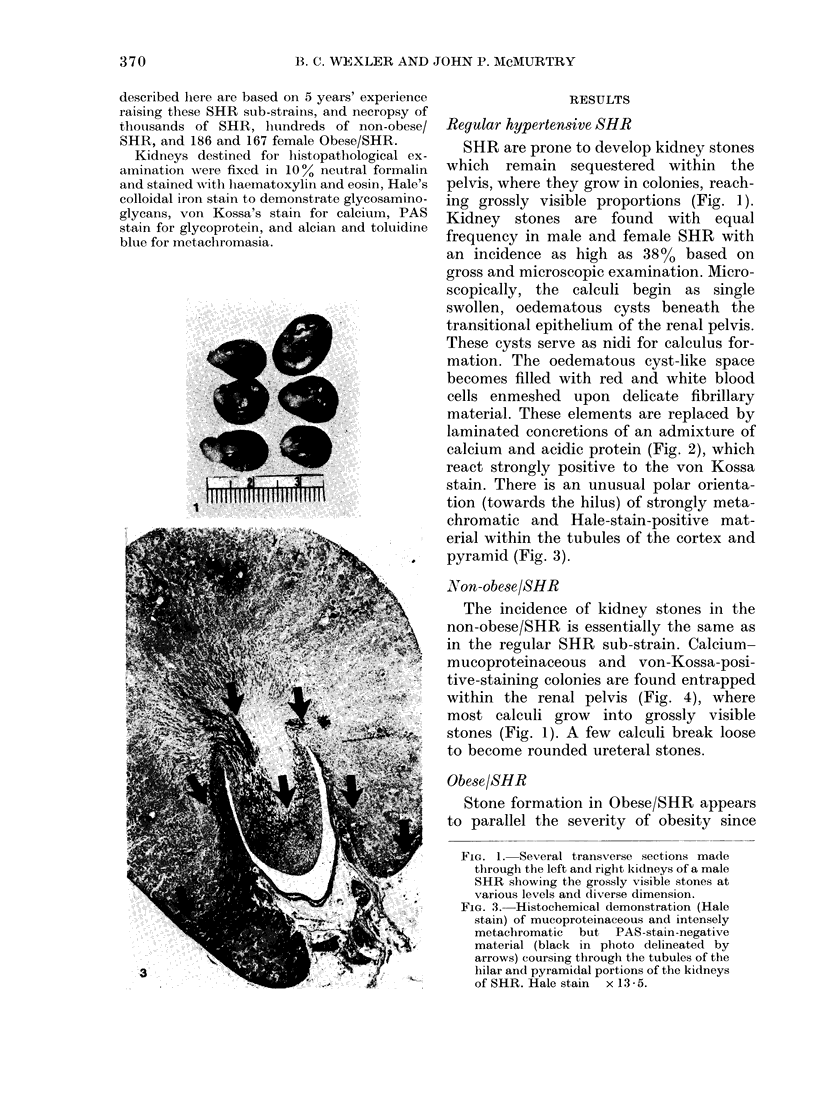
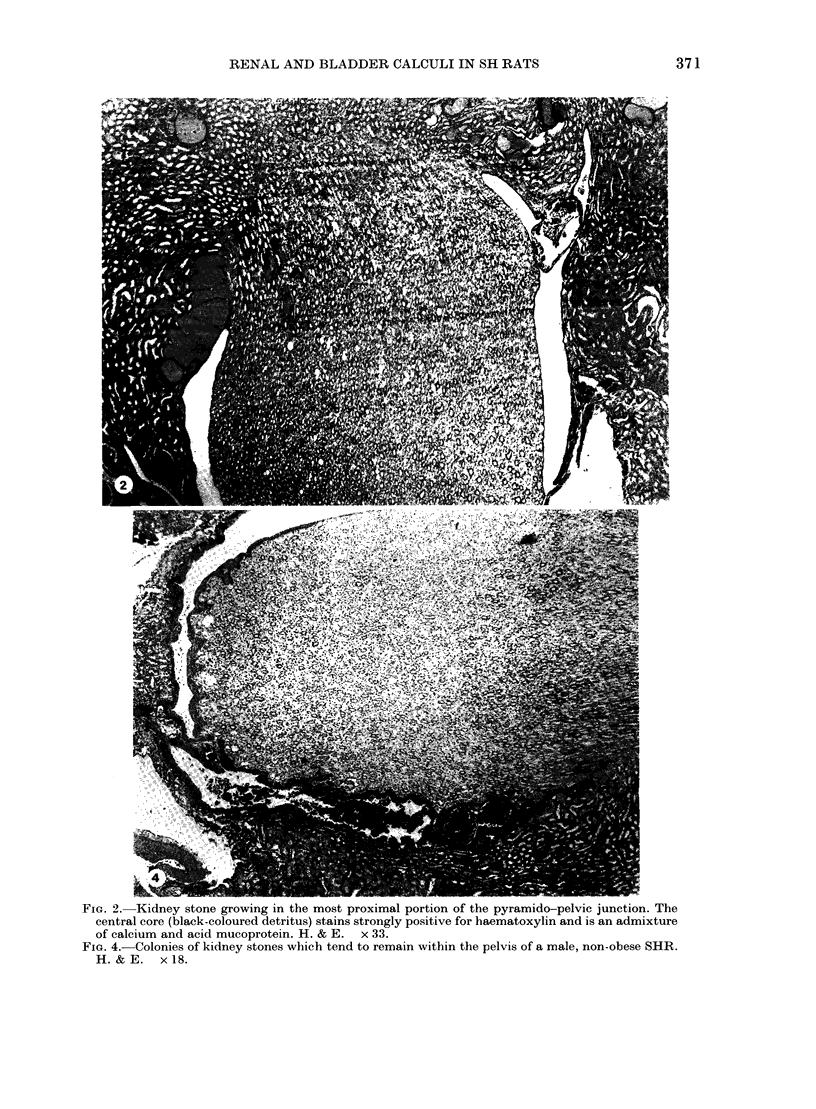
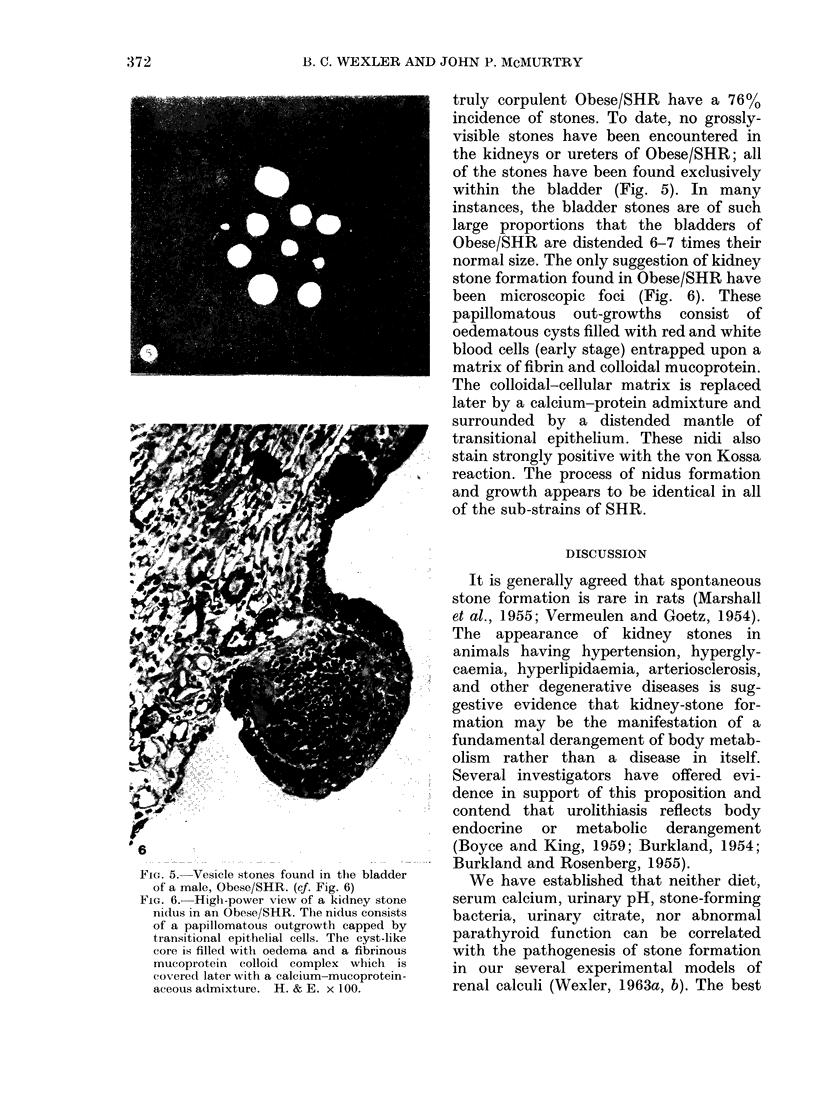
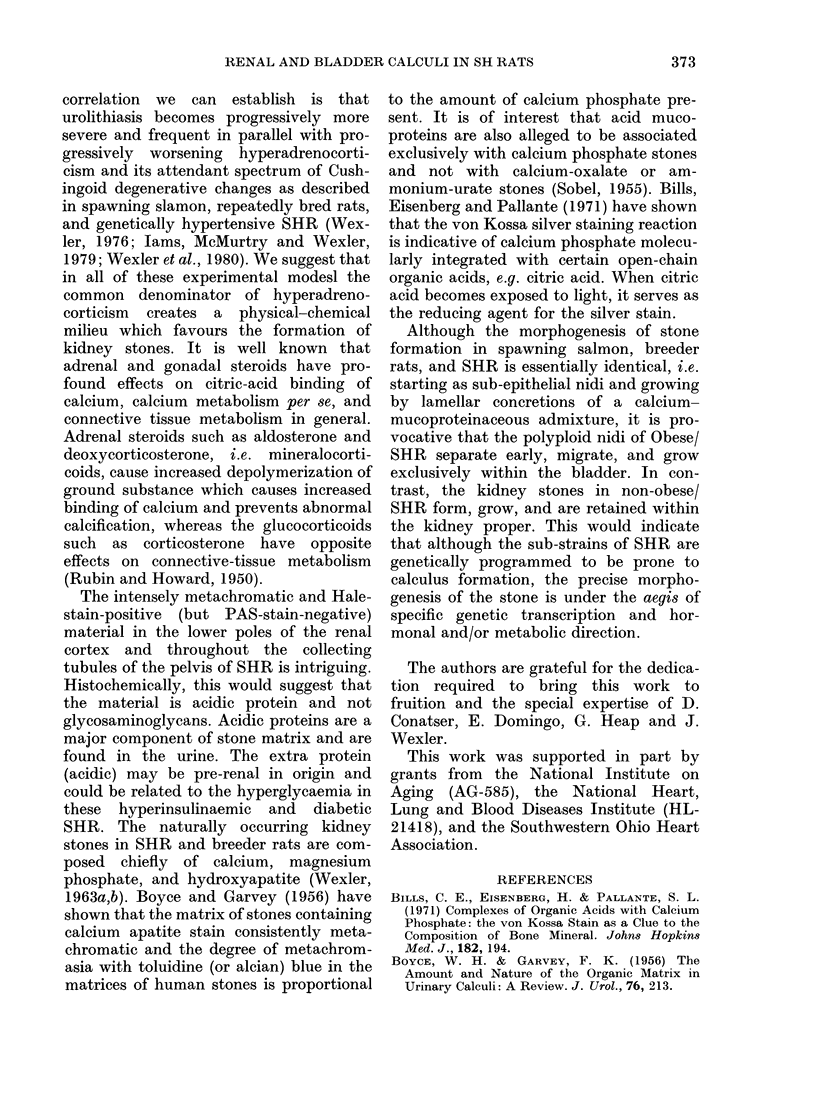
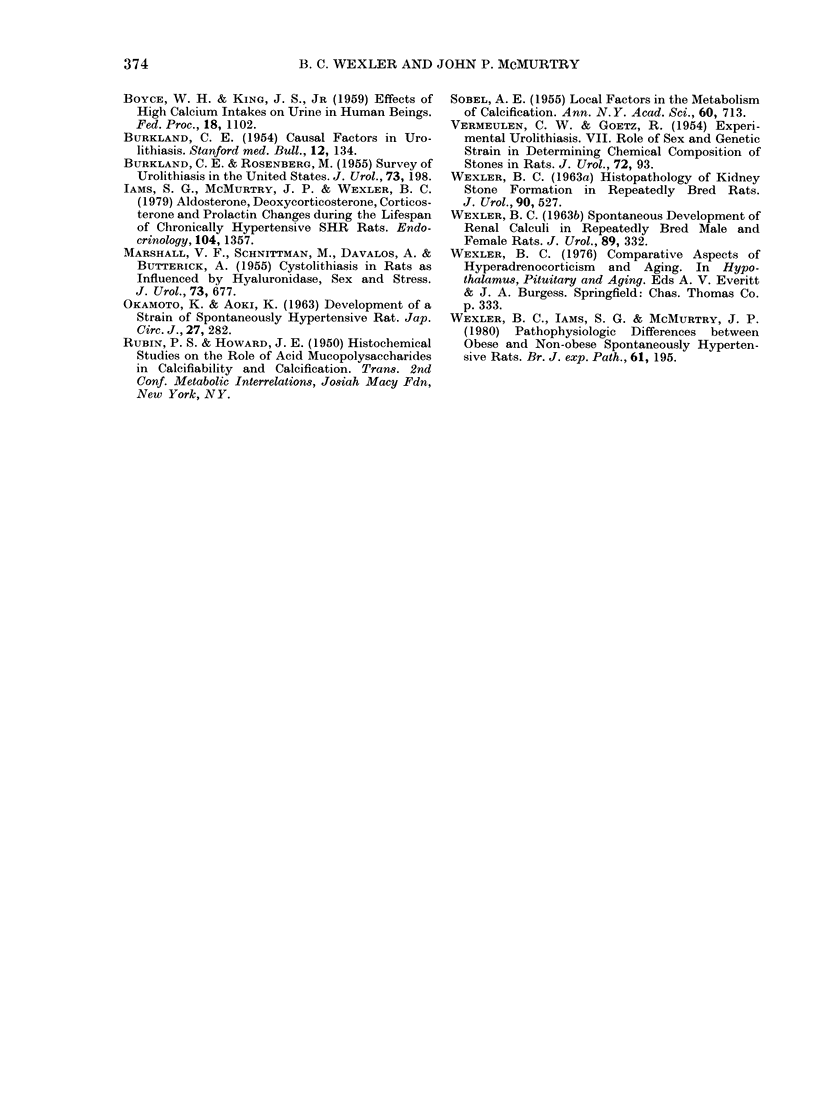
Images in this article
Selected References
These references are in PubMed. This may not be the complete list of references from this article.
- BOYCE W. H., GARVEY F. K. The amount and nature of the organic matrix in urinary calculi: a review. J Urol. 1956 Sep;76(3):213–227. doi: 10.1016/S0022-5347(17)66686-2. [DOI] [PubMed] [Google Scholar]
- BOYCE W. H., KING J. S., Jr Effects of high calcium intakes on urine in human beings. Fed Proc. 1959 Dec;18:1102–1111. [PubMed] [Google Scholar]
- BURKLAND C. E. Causal factors in urolithiasis; role of possible interrelationship of stress, metabolism, and occupation. Stanford Med Bull. 1954 May;12(2):134–139. [PubMed] [Google Scholar]
- BURKLAND C. E., ROSENBERG M. Survey of urolithiasis in United States. J Urol. 1955 Feb;73(2):198–207. doi: 10.1016/S0022-5347(17)67385-3. [DOI] [PubMed] [Google Scholar]
- Bills C. E., Eisenberg H., Pallante S. L. Complexes of organic acids with calcium phosphate: the von Kossa stain as a clue to the composition of bone mineral. Johns Hopkins Med J. 1971 Apr;128(4):194–207. [PubMed] [Google Scholar]
- Iams S. G., McMurthy J. P., Wexler B. C. Aldosterone, deoxycorticosterone, corticosterone, and prolactin changes during the lifespan of chronically and spontaneously hypertensive rats. Endocrinology. 1979 May;104(5):1357–1363. doi: 10.1210/endo-104-5-1357. [DOI] [PubMed] [Google Scholar]
- MARSHALL V. F., SCHNITTMAN M., DAVALOS A., BUTTERICK A. Cystolithiasis in rats as influenced by hyaluronidase, sex, and stress. J Urol. 1955 Apr;73(4):677–680. doi: 10.1016/S0022-5347(17)67454-8. [DOI] [PubMed] [Google Scholar]
- OKAMOTO K., AOKI K. Development of a strain of spontaneously hypertensive rats. Jpn Circ J. 1963 Mar;27:282–293. doi: 10.1253/jcj.27.282. [DOI] [PubMed] [Google Scholar]
- VERMEULEN C. W., GOETZ R. Experimental urolithiasis. VII. Role of sex and genetic strain in determining chemical composition of stones in rats. J Urol. 1954 Aug;72(2):93–98. doi: 10.1016/S0022-5347(17)67548-7. [DOI] [PubMed] [Google Scholar]
- WEXLER B. C. HISTOPATHOLOGY OF KIDNEY STONE FORMATION IN REPEATEDLY BRED RATS. J Urol. 1963 Nov;90:527–534. doi: 10.1016/S0022-5347(17)64450-1. [DOI] [PubMed] [Google Scholar]
- WEXLER B. C. Spontaneous development of renal calculi in repeatedly bred male and female rats. J Urol. 1963 Mar;89:332–340. doi: 10.1016/S0022-5347(17)64554-3. [DOI] [PubMed] [Google Scholar]
- Wexler B. C., Iams S. G., McMurtry J. P. Pathophysiological differences between obese and non-obese spontaneously hypertensive rats. Br J Exp Pathol. 1980 Apr;61(2):195–207. [PMC free article] [PubMed] [Google Scholar]




